Bric-a-Brac 43
A long weekend in San Miguel de Allende, the coziest travel sweater, and dream trips all over the world planned by a veteran travel magazine editor-in-chief
Greetings from the Buchinger Wilhelmi clinic in southern Germany, where I’m wrapping up a two-week fast. It’s my second time here, and I can’t say enough good things about it—you’ll be able to read all about it in our next issue of Yolo Journal, which we’re calling “The Cure” issue, given its wellness focus. As for the non-magazine readers, I’ll write more about it here, too, and include some of the incredible recipes we’ve learned during our stays. Every time I’m in Germany or Austria I feel like I’m learning something new in the world of alternative health. One of our favorite and most useful takeaways from Buchinger was learning about the healthiest oils to cook with (in a post coming soon!). In other news, spring is almost here, so we’re gearing up on our summer travel planners! First up is Spain, so please post your questions in the comments! If you’re new to us, last year we did travel planners responding to readers’ questions on France, Italy and Greece (paying subscribers can access them in our Archives). This year, we are also planning to cover Portugal, Scandinavia and Japan. Thanks, as always, for being a part of our Yolo community—we appreciate you so much. x Yolanda
Just Back From…San Miguel de Allende
By Alex Postman
For years, I’ve heard about San Miguel de Allende in Guanajuato, Mexico’s central highlands, exerting a kind of mythical pull over foreigners as a mecca of arts, architecture and food. In the ‘70s, my cousin Jenny packed all her belongings into her Volkswagen Beetle, sped off from Boulder to San Miguel, and never looked back. The city repeatedly topped CN Traveler’s Readers Choice Awards when we worked there; those photos of ochre- and red-painted colonial buildings lining narrow cobblestone streets looked so enchanting and unlike the gritty patina of Mexico City, 150 miles to the southeast. What was the deal? And is this place for real?
Jenny would tell you that it was, but that today it is unrecognizably built up and fancified (which is why she moved to Patzcuaro, three hours south, a decade ago). I have no doubt it was way more authentic—and Mexican—back when she arrived, but to a newcomer, it still hangs onto its soul. Nationally, San Miguel is known as the birthplace of Independence—Ignacio Allende was a local revolutionary hero in the war against the Spanish. And as a UNESCO Heritage site, it is also protected, which means that the development in the center city is stealthy and for the most part indoors—where, yes, there are now five-star hotels, destination restaurants and expensive boutiques. There are also many, many Americans—retirees, wedding parties that parade through the streets, Gen Y/Z laptop jockeys, and Boomer hippie holdouts. Their numbers can be traced to two factors: in the 1930s, an American artist named Stirling Dickinson arrived in San Miguel and founded the (still running) Instituto Allende, turning the city into a kind of international artist’s colony. Then after WWII, it was the only foreign university where GIs were able to apply their education grants. People say it is the safest city in Mexico (I felt perfectly at ease walking around by myself at night)—in fact, residents still refer to it as a “town,” which it does feel like, as so much of life seems to center around the main square, the Jardin Allende, and the pink-stone, 17th-century Parroquia de San Miguel Arcángel church. Actually, it reminded me most of Santa Fe: the cultural crossroads, the art, the cast of characters.
Unfortunately, my trip was cut short because my mom, who I was traveling with, came down with bronchitis (thanks to the more adventurous first part of our trip, through the butterfly sanctuaries and artist towns of Michoacán—more on those another time!), so I didn’t get to explore as much as I’d hoped. (Note: the upside of a big American presence is a big modern hospital, the MAC, where the doctors speak English—hope you never need that tip, but there you go!) And so, what follows is a synthesized list of places I gathered from a few sources—a friend of a friend who bought a house there in 2005, another who loves the city and planned to get married there until the pandemic had other ideas, and a few others, including, of course, Jenny. But San Miguel feels smallish, unintimidating, and easy to figure out on foot (though it’s steep up there at 6,000+ feet!), so I recommend you just wander and discover.
WHERE TO STAY
I was invited to stay at Casa de Sierra Nevada, A Belmond Hotel, one of the newest properties to open here. They took over six historic 16th-18th century casas just a couple of blocks from Jardin Allende. You enter from the street into one of several leafy, be-fountained courtyards that face each other, one of them—ours—has a beautiful stone pool. Our high-ceilinged room was comfy and elegant, with hand-carved wood furniture, a fireplace that we used at night and a hot tub on the patio. The pretty main lobby courtyard is hung with Mexican artwork and is the spillover space for the hotel restaurant, Andanza (get the excellent chilaquiles Doña Mary for breakfast). One of their residences/restaurants is a few minutes downhill, in an old fort with a huge cactus and flowering garden; it’s worth stopping by to see the paper machié mojigangas, giant puppets introduced by the Spanish that are used at festivals (the city’s leading artisan has a workshop here). Their free shuttle service around town is super helpful as the steep hills can be challenging in a hurry! And the service, especially their help with my mother’s situation, was so supportive. Other hotels I’ve heard are good are: L’Otel at Doce 18 Concept House (built over a stylish concept shop) and Hotel Amparo, a mayoral villa transformed by a Mexican textile artist. There’s also the popular Rosewood in the hills north of the city, which has been a player here for a decade. It is also a big AirBnB locale, thanks to all the expats.
EAT & DRINK
Lavanda. A great breakfast and brunch spot with coffees from all over Mexico roasted on premises (try the lavender infusion!). Really delicious toast (avocado or beans/cheese/chorizo) and egg dishes; worth waiting on line for (they don’t take reservations).
More breakfast/brunch: Raices, Posada Corazon, La Sirena Gorda, Café San Augustin (for the chocolate and churros), and Panaderia La Colmena, open since 1901, for freshly baked bread and pastries.
Café Rama: Unfussy and creative food in a funky and fun large space near the Rosewood.
Atrio. I made this my first stop for dinner, flavorful modern Mexican-fusion (the tuna ceviche and peking duck tacos were yum) and long mezcal/tequila menu on the second floor of a building with a full-on view of the Parroquia, which is lit up at night like a pink wedding cake.
El Correreo. Known for its green mole and margaritas in a cozy local atmosphere
El Manantial. An authentic cantina with excellent tacos
La Parada. A Peruvian restaurant and institution that several people said is one of the best meals in town.
Moxi. Gastronomic-style Mexican helmed by a former student of Enrique Olvera
The Restaurant at Sollano. Global comfort food with a rigorous farm-to-table approach. Super romantic, as well.
La Luna Bar. The rooftop bar at the Rosewood. Ideal spot for drinks, tapas and a view of the city.
SHOPPING
La Calaca. I was on a hunt for large ceramic pineapples from Michoacán, traditionally used for serving punch, and I hadn’t managed to pull the trigger earlier in my trip because none of the artisan vendors I met along the way were able to ship! (The pineapple spines are super delicate.) I figured I would find plenty of pineapples in San Miguel, but I was wrong. Until I found a vintage one made by the grand-master artisan himself at this extraordinary folk-art gallery, owned and run by Evita Avery. Evita was born in Mexico to Texans and has been in San Miguel since before Jenny, even. This place made my heart race: marionettes from the 1840s, Oaxacan ceramic sirens, paper machie’d and feathered carnival masks. Everything is extraordinary, and extraordinarily reasonable. And yes, Evita does ship internationally!
The Galleries at Fábrica La Aurora. This is a former textile factory just on the edge of town that now houses dozens of art galleries and artists’ studios, home furnishings shops, and vintage treasures. Things don’t really get going until after 11, but it’s a fun stroll to come over and browse the shops, artists painting or teaching in their spaces, and have a coffee in the grassy courtyard. A few standouts: Cantadora Cantera (gorgeous Mexican antiques – I wanted everything!), Galería Noyola Fernández (museum-quality Mexican artists’ work, from Francisco Toledo and Marcos Huerta to Rufino Tamayo), Buhardilla (some French antiques but also Mexican).
Mixta. An upscale curation of indigenous and contemporary crafts (international as well); a bit pricey but some good finds.
Dolce 18. This concept shop with interconnecting rooms is fun to browse for handmade gold jewelry, candles and other gifts, Mexican fashion designers and a modern spin on huaraches.
KM33 for embroidered clothing and bags.
Mercado de Artesanías. A long, multi-block colonnade of indigenous hand-made crafts sold in booths—some tourist tat alongside high-quality crafts, from textiles and tinware to straw bags, huaraches and ceramics.
A FEW OTHER THINGS TO DO
There are so many things to keep you busy here, it feels like a grown-up arts camp, with art classes (check out the Casa De Cultura de San Miguel de Allende for drawing, painting, and woodworking), cooking classes, wine-tasting classes, etc. Speaking of wine, the Querétaro wine-growing region around San Miguel is up and coming, with more than 200 wineries; a couple standouts mentioned to me were Cuna de Tierra, the area’s first winery, known for its Cabernet Sauvignon and Merlot, and Cava 57 for sparkling wines.
Casa Dragones. The trendy blue-label tequila has a tasting room in a 17th-century building just steps from the Belmond. I tried to just drop in, but you need a reservation for the tasting and tour of the restored house.
Zindunga. Local musician and flamenco guitarist Guil Gutierrez has a ranch just outside of town, which on Sunday afternoons becomes a festival of Mexican food and music.
El Charco del Ingenio. A lovely walk through a wide array of succulents and cacti from Mexico, many of them rare or endangered.
Escondido Place. Jenny says this is the best of the region’s natural hot springs spas, about 20 minutes outside the city. The water is constantly flowing—there are no stagnant pools and varied degrees of heat and a few very vigorous waterfalls. The thermal water is thought to have lithium in it—it’s so relaxing. There’s also a restaurant on the premises. You’ll need to take a taxi there; about 9 dollars to enter.
Hacienda tour by horseback. I met the very charming Martin Peña, an Arabian horse breeder and local vaquero in flamboyantly colored custom cowboy boots, while chatting with Evita at La Calaca. He was there to bring her honey he makes from his own bees, which he swore would cure my mom’s bronchitis (I wound up buying a huge bottle that I somehow got through customs). Anyhow, he leads hacienda tours on horseback in the landscape around San Miguel—a day of riding out to a farm and then having lunch with the family, before returning. I can’t vouch for it, but his word was good on the honey, and he can croon a love song too! His cell is: 044 415 107 5060 or email hothorsesriding@hotmail.com.
Alex Postman is Yolo Journal’s Deputy Editor
TRAVEL UNIFORM
I’m a big shawl-neck cardigan fan—I think it started in San Francisco, where I lived in my early 20s, and was constantly caught off-guard by the chilling late-afternoon fog. I have a couple that I love: one from Drakes that I stole from Matt, and one from J Crew that I also stole from him. But when he put on his new deep espresso-brown cardigan from Colhays, a knitwear brand made in Scotland, I knew I wasn’t going to be able to steal it. I was going to have to get my own. It was the thickest shawl—so deep it covers the neck up to the ears—and the richest, most densely knit wool. I ordered one in navy immediately and had it sent to me here at Buchinger, and I haven’t taken it off since. (Some have asked me on IG what size I’m wearing in the post, and it’s a 36, and Matt’s wearing a 38.) While it would be quite bulky to pack, it’s such a versatile piece that I plan on wearing it on the plane to any destination that may have cool days/nights, but doesn’t require a winter jacket. —Y.E.
THE NAVIGATOR
Nancy Novogrod, Founder, Culturati Travel Design
Tell us about you and your company.
Giving up the travel world, with its endless exhilaration and enlightenment, simply wasn’t an option after 21 years as editor-in-chief of Travel + Leisure. Founded in 2018, Culturati Travel Design has been a way for me to merge my passion for art, architecture and design with my fascination for hotels, restaurants, shops and experiences that transcend the rest. It’s both going backwards in my life—to my academic studies in art history, my time in the late 80s and early 90s as editor-in-chief of HG/House & Garden, my almost lifelong obsession with decorating and fashion—and going forwards, as there are always new and more exciting secrets to uncover. I am lucky enough to have my own company, but also to be affiliated with the group of really smart people at Local Foreigner, which was founded by four young women, three of them out of Indagare, eleven years ago; I was the second independent contractor, but there are now 18 of us.
What’s the entry level to talk to you?
Most of the trips I work on cost $30,000 or more, but I don’t hold hard and fast to this level of investment. I help clients with shorter trips and assist their grown children with honeymoons and romantic getaways. In general, the people I work with travel at least two or three times a year and are not reluctant to invest in memorable experiences.
What is the sweet spot of your expertise?
I am pretty much a generalist, but given my obsession with art and design and food and shopping, European cities and resort areas are a special interest of mine—and planning trips to Italy, where I have spent a good deal of time through the years, is always a special pleasure. Asia, particularly India and Thailand, were frequent destinations during my time at the magazine and remain high on my list, as do Vietnam, Cambodia, Bhutan, and Japan. I was in Japan at the end of 2022 on one of my by-invitation-only small group trips, and was reminded of how much it has to offer in so many exquisite ways, including food and temples and gardens and traditions—and ceramics (I am a passionate collector of these, both antique and modern pieces from Japan, China, and South Africa—black Zulu pottery).
A favorite experience/trip you’ve planned that best represents your philosophy.
I have a hard time stopping myself from overloading on experiences in my own travels and one of my great joys is that my most significant client, also a long-time friend, is fairly insatiable as well. Within five months, beginning last March, he and his family traveled to Saudi Arabia, Austria for skiing, Morocco, Paris and Africa. His favorite moments from this marathon of destinations were in Laikipia, a wild and unspoiled reserve in northern Kenya, where he and his extended family stayed in a rather grand private house with vaulted archways and took game drives on horseback through the open plains.
A favorite hotel/lodge/house you love and go back to again and again…
The hotels I return to are J.K. Place Rome, The Peninsula Hong Kong, Le Sirenuse in Positano, Umaid Bhawan Palace in Jodhpur, and the Oberoi New Delhi. I just stayed at the enormously tranquil Four Seasons in Kyoto, surrounded by private gardens, and I plan to add this to the list. There are places I long to return to, maybe top among them Uxua, a magical resort built into the village of Trancoso in Brazil, and Iturregi in Getaria, Spain—really more an inn than a hotel, located outside of San Sébastian and near the Camino di Santiago.
The most memorable meal you’ve had while traveling…
I love crabs and my most memorable meals have involved chili crabs. The venue is tied between Trishna in Mumbai—just thinking about their pepper chili crabs makes me hungry—and a large very local riverside restaurant in Singapore, Jumbo Seafood.
A not-to-be-missed favorite experience in your region of expertise…
Shopping in Jaipur: Kashmir Loom at the Raj Mahal Palace, the book shop at Rambagh Palace, Brigitte Singh, Gem Palace, Hot Pink, Anokhi…I could go on. The good news is that I’ll be back for more in April.
What is a place we should consider traveling to that could really use our dollars, and what is a place we should put on hold because, even though we love it, it sees too many tourists?
So many formerly flourishing places were dramatically impacted by the pandemic, including tourist meccas like Paris, London, and New York, that it’s really hard to point to a destination that hasn’t needed our dollars. Now that travelers are coming back in droves, it can be a challenge for people like me to find availability for hotels and top DMCs in order to provide the seamless experiences they offered pre-pandemic; some staff just haven't wanted to return.
The good news is that there is now significant demand for destinations where the economy is fueled by tourism, such as Southeast Asia, Africa and Central America. As we know, however, the balance between too little and too much can tip quickly, resulting in damage to the environment in places like the Galapagos and Antarctica and to the infrastructure as well in Siem Reap, Cambodia, for instance.
It's a good idea to avoid the South of France, the Amalfi Coast, and even US coastal destinations such as Nantucket and Martha’s Vineyard, in peak season; go in early June or September, rather than July or August if you don’t want to deal with crowds. Some of this takes care of itself, as you can’t get hotel reservations, even if you want them.
The hardest-working item you always pack…
It would have been my clothes steamer until recently, when I finally weaned myself off checking luggage; now, I would say, it’s my Kindle. I try to read a book, always a novel, that takes place in the destination I am heading to.
What is something you wished we all knew or were better at as travelers?
That you need to be flexible and patient—and not waste time being upset while others are trying to solve your problem.
What’s the best way to get in touch?
The email info@culturatitraveldesign.com is the best way to reach me.
MOODBOARD
Our favorite Instagram account of the week.
Chef Roze Traore is luring his following from Eleven Madison Park, Soho House, and the NoMad across the Atlantic to his new hotel and restaurant on the Ivory Coast, La Fourchette Roze.
Jacques Garcia’s incredible villas for rent near Noto in Sicily.
Frederic Lagrange, the photographer behind the beautiful book Mongolia, is hosting a photography workshop and 1,100 mile journey across western Mongolia later this spring.
You can book this mountain hut in Kitzbühel, where the host Oswald delivers breakfast and a first class dinner with his skidoo.
Navigator favorites Truffle Pig shared a great list of their favorite “heart and soul” hotels (small, simple, elegant and well-priced) around the world.
Mii Amo in the spiritual belly of Sedona, AZ, reopened this week after a two-year reno.
Our friends at Luna Zorro and Coppola Family Hideaways are hosting a week-long trip through Guatemala centered around textiles, tradition and cuisine.


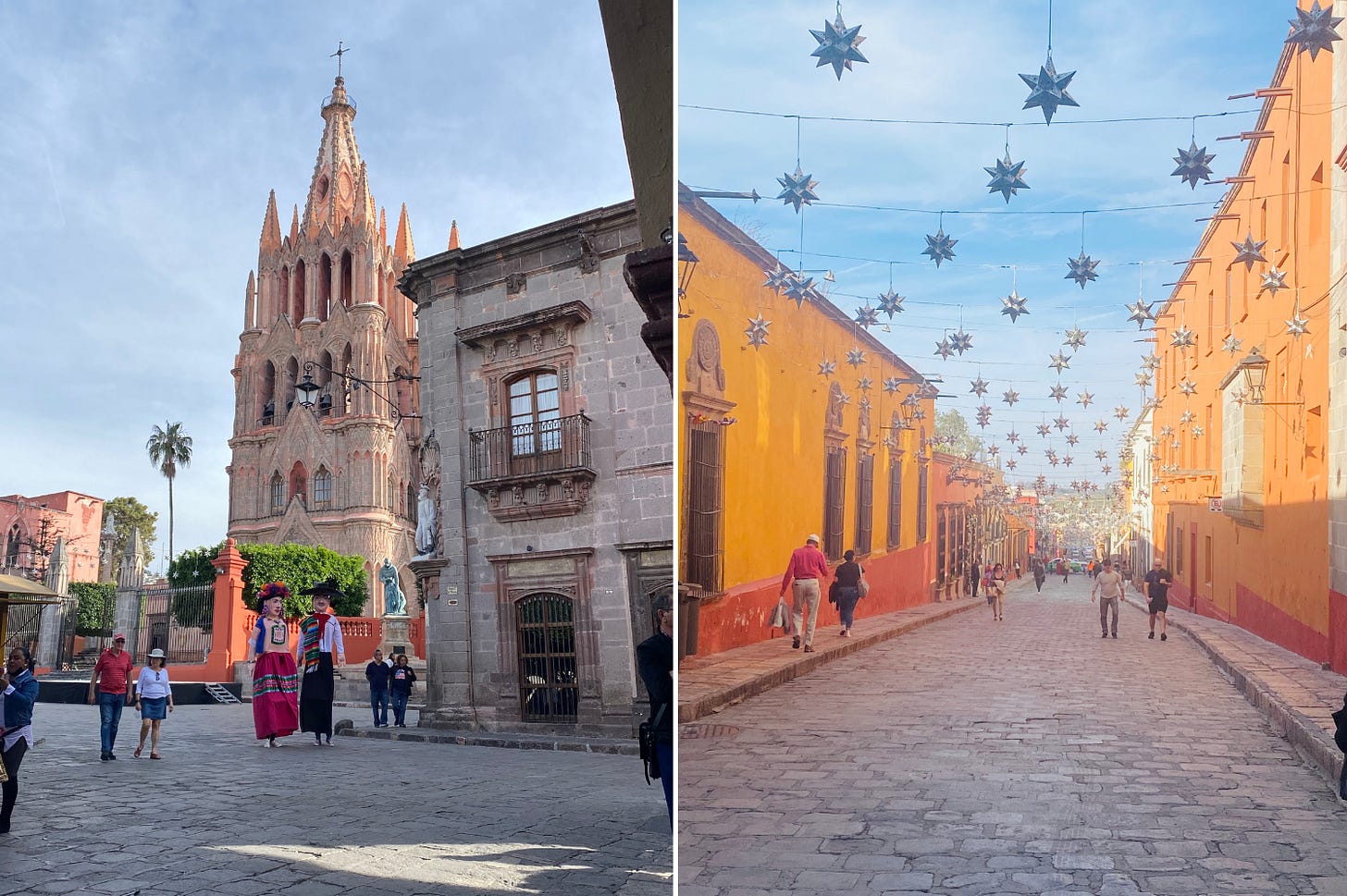
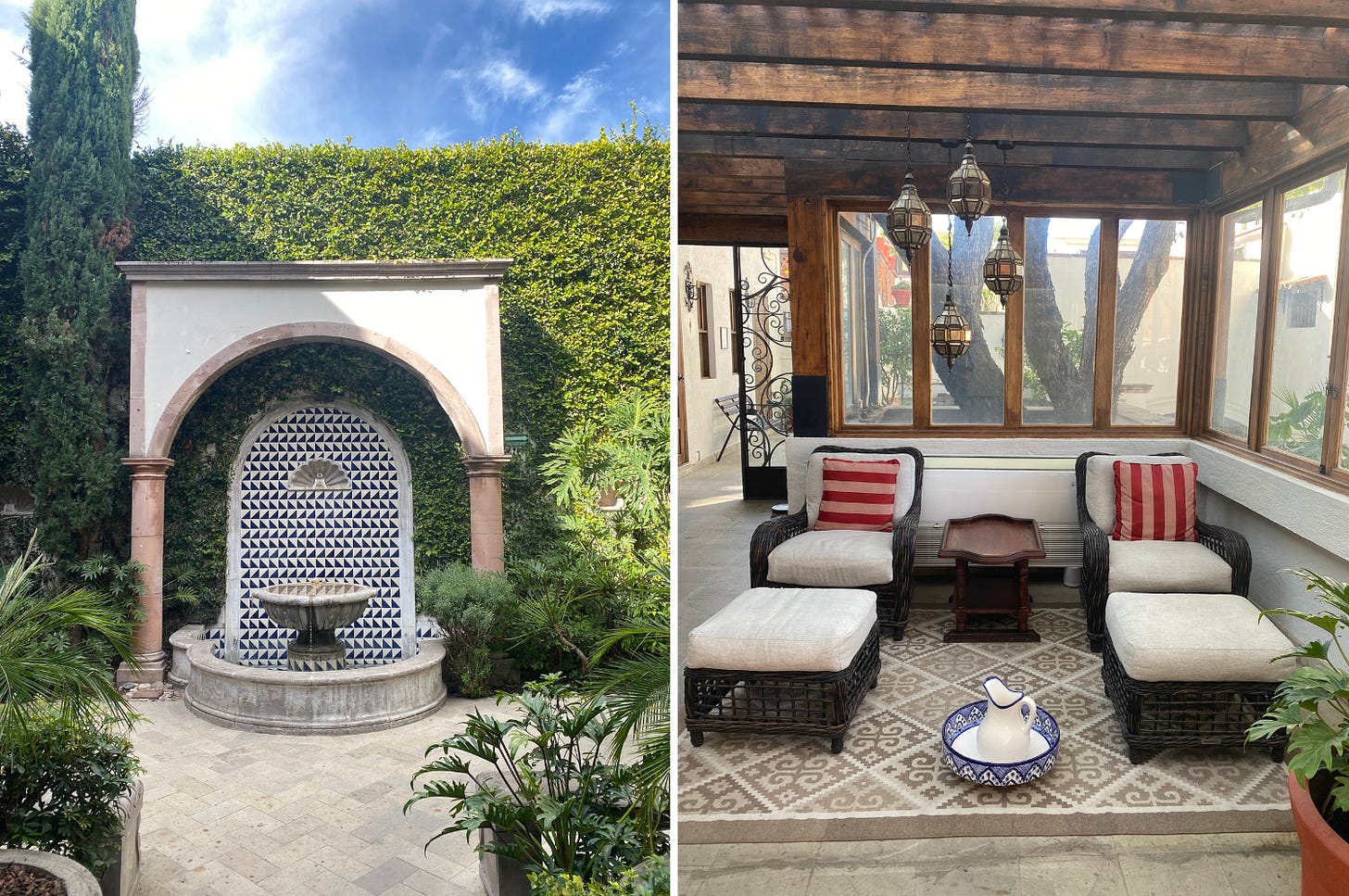
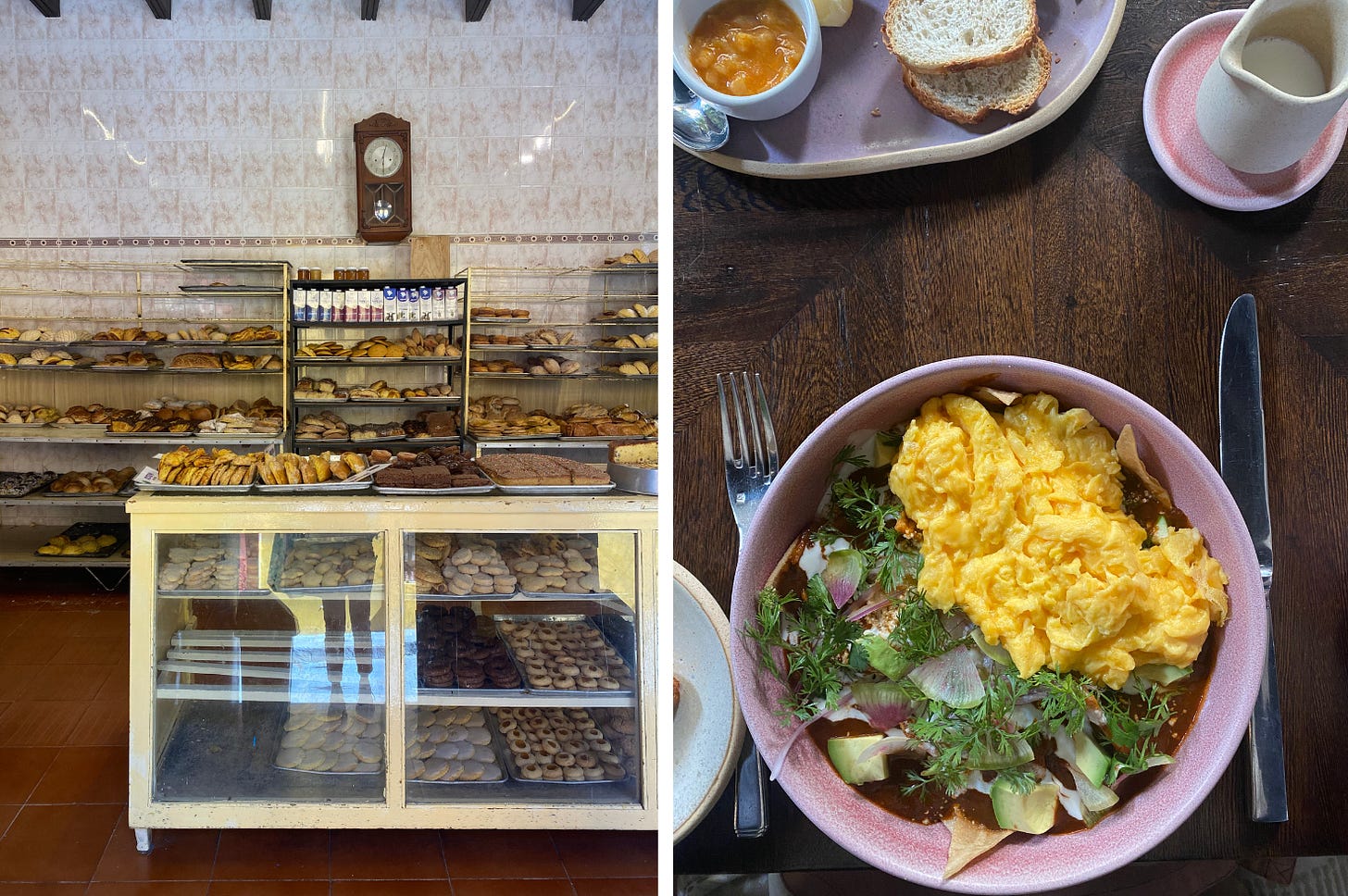
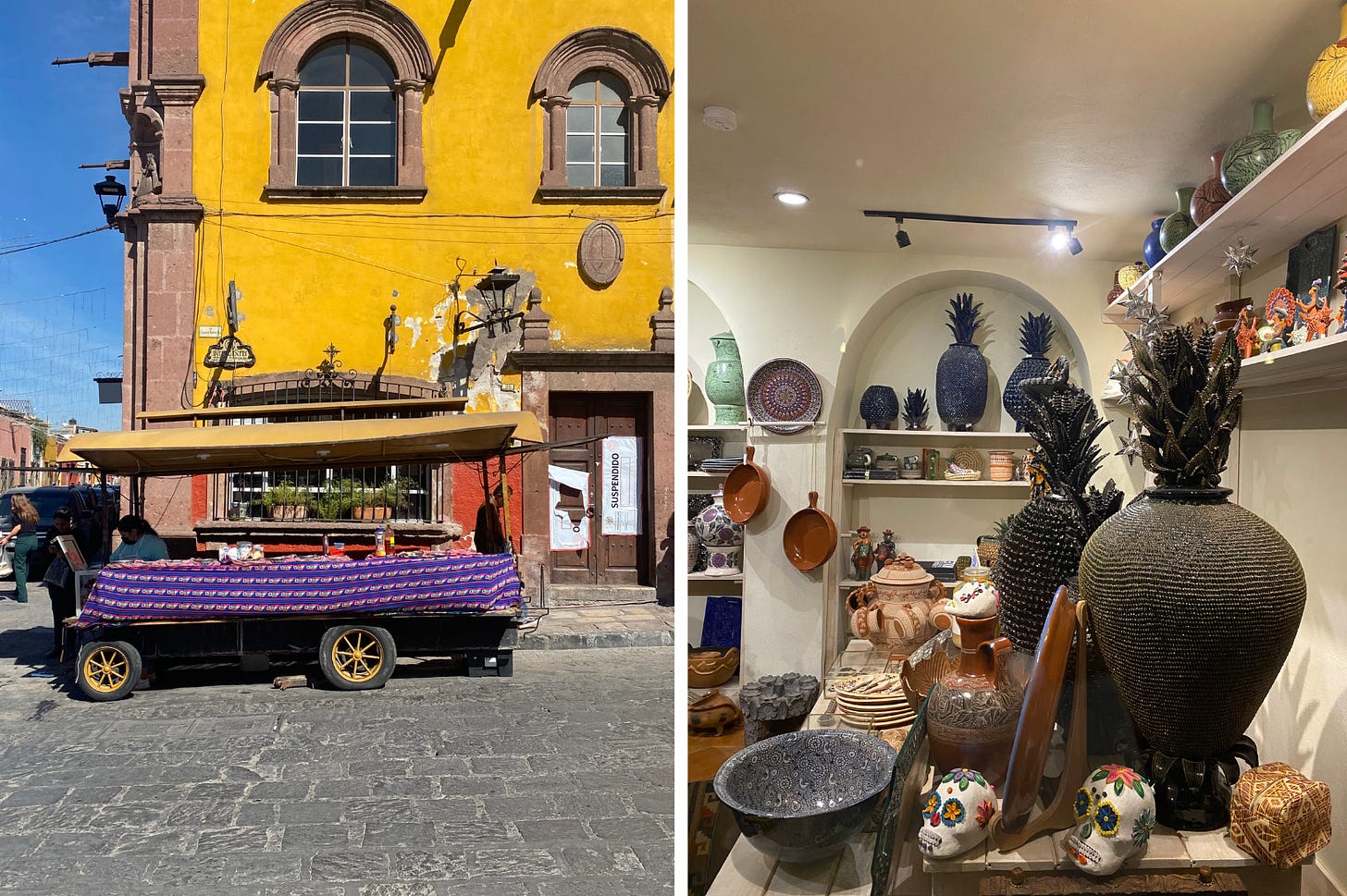

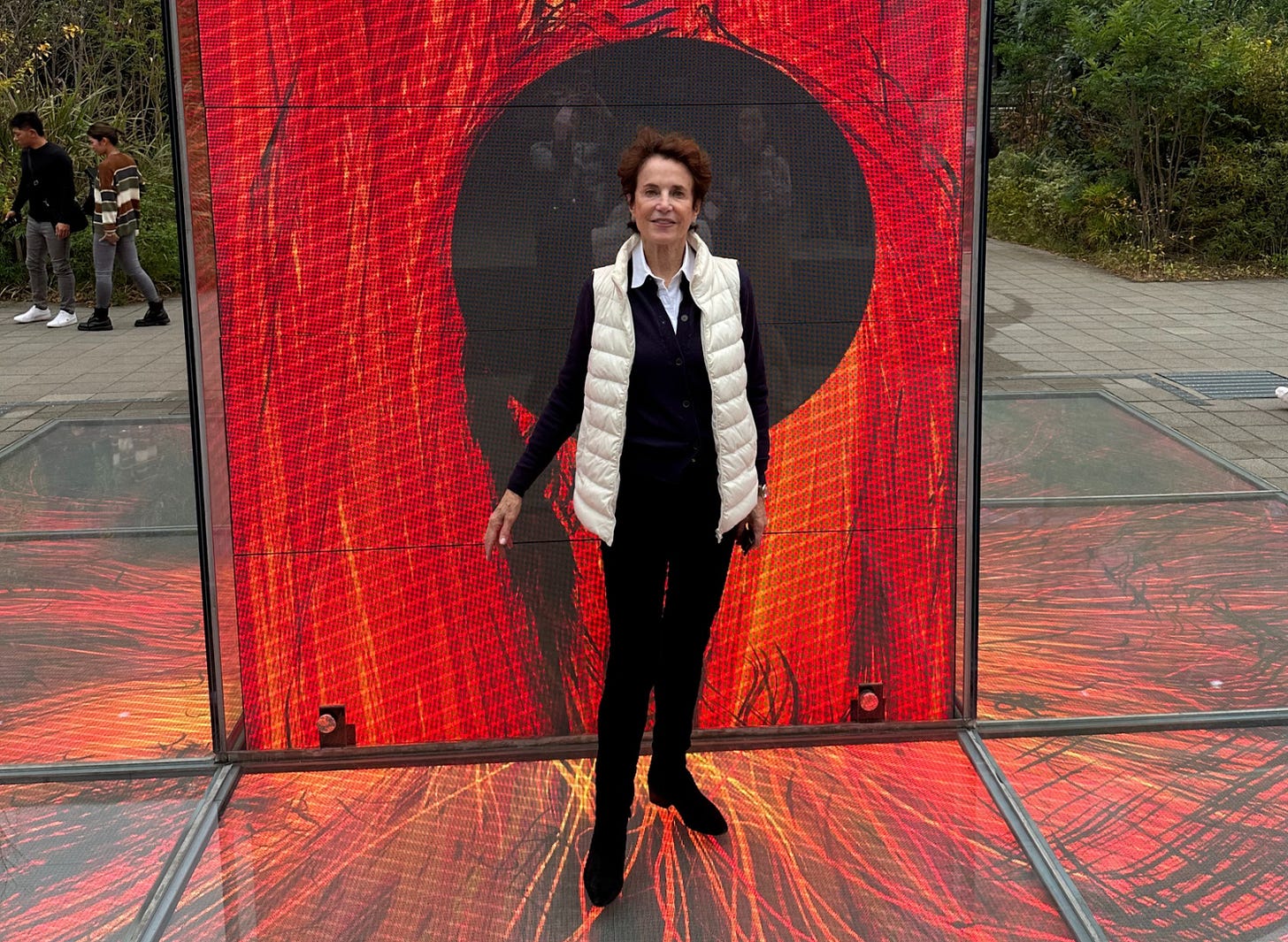
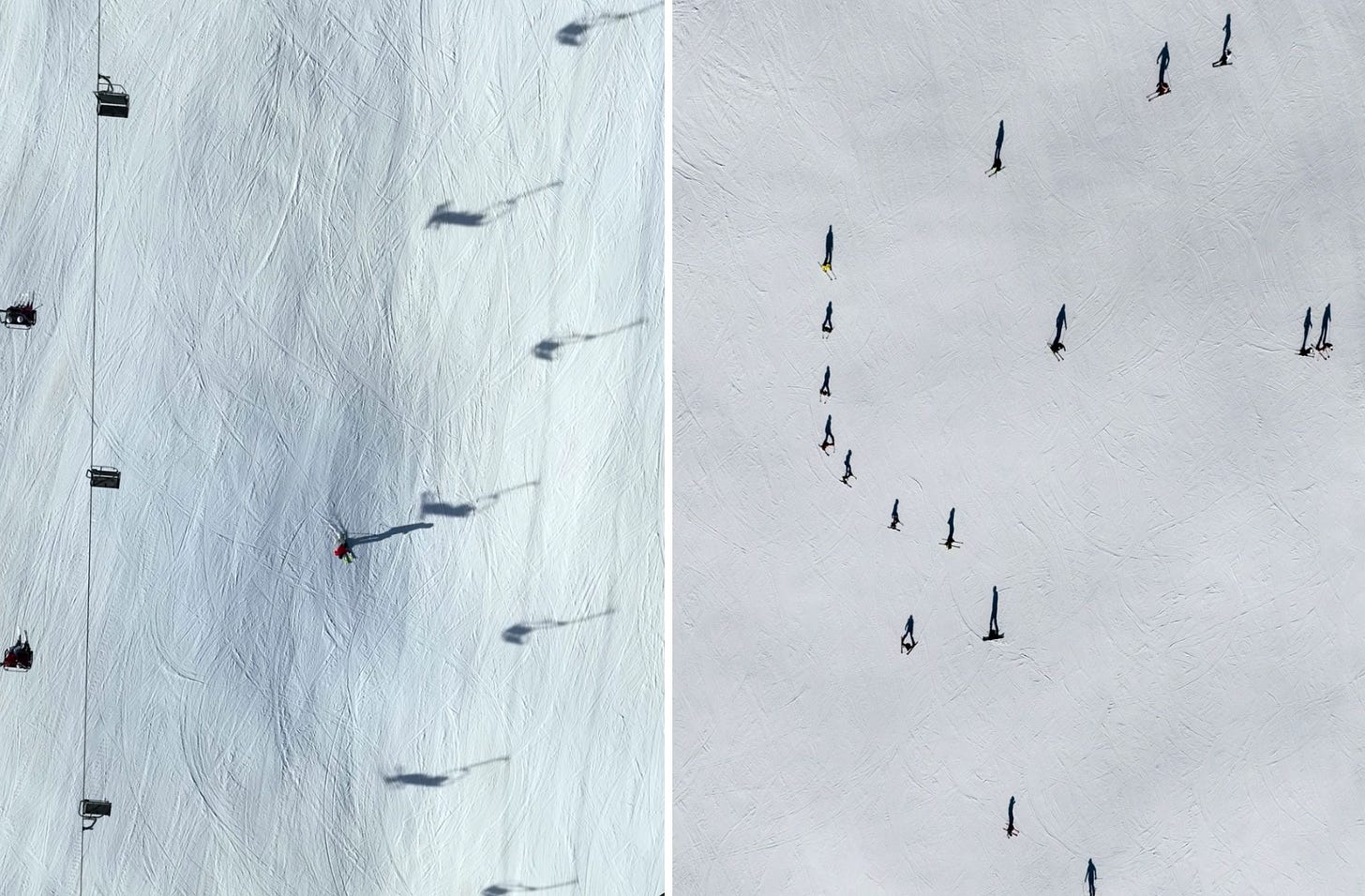
Two Spain destinations: Best time of year and best hotels in Mallorca. In Barcelona, favorite neighborhoods, hotels (with pool?) and restaurants, and day trips from Barcelona. + Interesting landmarks and local crafts for architects and designers.
Hello . . . I would like to know the differences, in your opinion, between the two Buchinger Wilhelmi clinics in Germany + Spain.